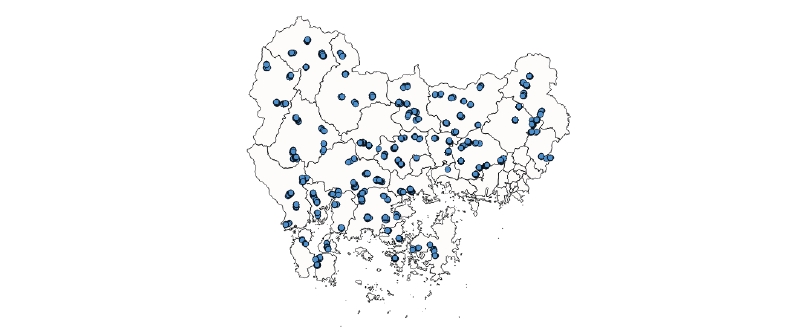Abstract
This study was carried out to investigate the occurrence and distribution of ALS inhibiting herbicide-resistant weeds and to estimate the appeared areas of resistant weeds in the paddy fields of Gyeongnam province of Korea in 2017 and 2018 using a soil assay method. Compared with the 2012 survey, this study showed that the infested ratio of ALS inhibiting herbicide-resistant weeds increased from 1.0% to 66.8% and the infested area increased from 876 ha to 49,008 ha. The infested area of ALS inhibiting herbicide-resistant weeds was estimated in Ulsan-si (8.4%), Hapcheon-gun (8.3%), Haman-gun (7.9%), Goseong-gun (7.9%), Hadong-gun (7.3%), Jinju-si (7.2%), Changnyeong-gun (7.0%), Gimhae-si (6.4%), Miryang-si (5.5%), Busan-si (4.9%), Uiryeong-gun (4.6%), Namhae-gun (4.3%), Geochang-gun (4.2%), Changwon-si (3.8%), Geoje-si (2.9%), Yangsan-si (1.8%), Sancheong-gun (0.9%) and Tongyeong-si (0.4%), and the herbicide resistant weeds was not occurred in Hamyang-gun. The most dominant ALS inhibiting herbicide-resistant weeds in paddy fields were Monochoria vaginalis, followed by Echinochloa oryzicola, Lindernia dubia, Scirpus juncoides, Ludwigia prostrata, Cyperus difformis, Sagittaria trifolia and Rotala indica. ALS inhibiting herbicide-resistant M. vaginalis, L. dubia, and E. oryzoides occurred throughout Gyeongnam province, and ALS inhibiting herbicide-resistant S. trifolia and R. indica were only found in Gimhae-si. Therefore, these results will be utilized to estimate population dynamics of ALS inhibiting herbicide-resistant weeds and provide proper management practices in the paddy fields of Gyeongnam province.
Figures & Tables

Fig. 1. Map of soil collection site in Gyeongnam province.


